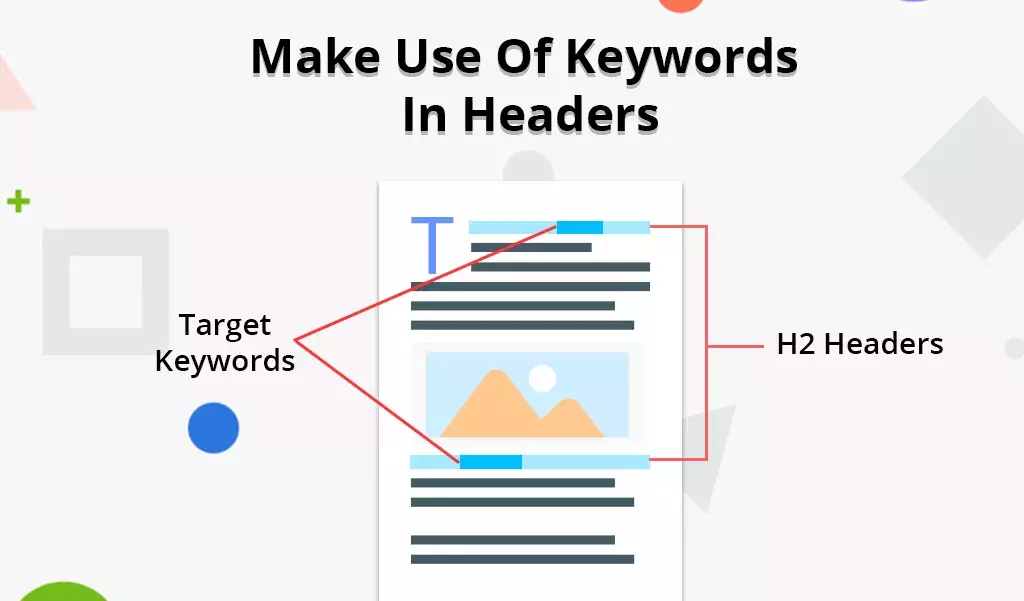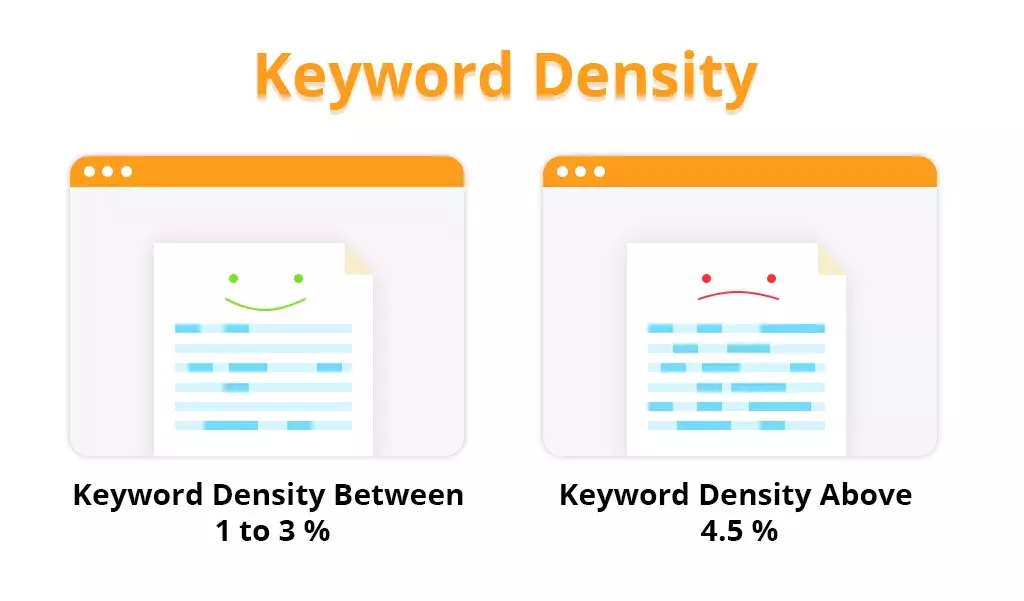How to use keywords effectively while writing a blog?
Table of contents

Writing a blog post for websites in itself is a tedious task for many. Moreover, publishing it is just a small part of SEO. Whether you are a newbie or a veteran in the blogging world, you might be aware of the fact that driving long-term organic traffic is not an easy job. You might be a blog writing expert and may have written amazing content but it won’t be any use of such great content if it is not showing in the search engine and read by your target audience. If you wish to rank your blog well and make it discoverable by your potential viewers, you will need to show the search engines that your blog articles are both SEO-friendly and engaging to the readers. Hence optimizing your blog for SEO is essential and keywords are the key ingredient while defining an SEO strategy. While you may already be aware of the fact that keyword research is an important part of SEO for ranking your blog higher in order to acquire new leads and customers online, you may not know how to insert keywords throughout your blog effectively for search engine optimization.
If you do not include the right set of keywords in an article that serves your target audience effectively, you will be missing a significant opportunity to grow your business. Because statistically, it is observed that 95% of people look at the first page of the page of search results and half of the clicks go to the first three results.
So, in this article instead of getting into how to search keywords for your blog post, we will rather, understand the process of how to correctly use keywords in your article when creating content for SEO. Once, you figure out these strategies of properly integrating keywords in your blog post, more of your web pages can be indexed on search engines and thus be found easily by your target audience.
It may seem like a daunting task at first, but after getting to know how to properly insert keywords, you can easily do it with a little bit of guidance. So, if you are ready to begin, let us dive into some useful tips on how and where to use keywords to help your content be found organically by the search engines that will help you drive massive traffic. If you are a beginner at blogging, here is a guide on how to write a blog?
Tips to use Keywords in your blog effectively
Focus Your Article On One Primary Keyword Phrase
Basically, the first step of writing any blog is to conduct proper keyword research. But here we are assuming that you are already done with this initial step and you are read with your target or focus keyword. So, make sure to focus your blog around that particular keyword because it helps the content writer to write a better article revolving around one idea or topic instead of trying to perform a circus. For example, suppose your primary keyword is lawnmowers, so don’t somehow tie contact lenses within the same article.
Apart from providing a guideline for the writer, it will help the readers better understand the main point of information being presented. Thus making the content much more relevant to what people are searching for. Though it is completely fine to pepper in a few other related keyword phrases within your SEO article, when it comes to relevancy and keywords, less is always more in this case.
Include The Primary Keyword in The First and Last Paragraph

Though the primary keyword should be included naturally throughout the blog, you need to follow some best practices when it comes to keyword placement in order to make your article SEO-friendly. First, make sure that you include your primary keyword somewhere in your first paragraph, basically closer to the beginning. This will frame your article in a way that will help the search engines better understand what the content is all about and avoid any confusion.
Similarly, while writing the conclusion of your article, try to include an instance of your primary keyword. This will help you give a clear idea about what your piece of content is all about to both search engines and your readers.
Also, make it a point to use your primary keyword in Meta description, title tag, and URL. This is of course a fact of common sense, but surprisingly many businesses don’t follow this practice. However, it is essential to insert your focus keyword in these three places because they are the ones that search engines look to crawl pages and identify what they are all about. Even though meta descriptions are only about 160 characters and title tags even shorter, you should not waste this opportunity to gain an advantage while learning how to write SEO-friendly content. Moreover, it won’t be hard to include your keyword in these meta tags with some word-smithing.
Insert Keyword Phrases That Are Related to the Primary Keyword
While the primary keyword should be the focal point of the article and the top theme presented, you should also insert other related keywords to boost up and fortify the primary keyword’s presence. Doing this correctly will help both readers and search engines recognize the hierarchy by just naturally reading through the content. Ideally, these related keywords are basically known as secondary keywords that are closely related to your primary keyword. So, inserting them in your blog will not change the focus of the article instead would reinforce the focus of the primary keyword.
A winning example would be inserting keywords that are just slightly different than the primary keyword or have a few extra words attached before or after your primary keyword. For instance, suppose your primary keyword is “SEO services”, so some great secondary keywords for this would be “best SEO services”, “on-page SEO services”, and “off-page SEO services”.
That being said, you can include many secondary keywords if your article is going to be a long-form guide. But make sure to consider the length of your article and not change its tone.
Make Use of the Keywords in Headers

Now as you have established your primary and secondary keywords, the next best tip is to utilize them in your headers. Headers are basically responsible for signifying that the content contained in them is important for navigating the article to both readers and search engines. They usually have a different HTML tag than the paragraph text, so it is an easy indicator for search engines to use to notify importance. This makes it important to include your primary keyword in at least one or two headers and secondary in any remaining headers. But make sure to prioritize both these keywords in their order of importance as you may not wish your secondary keyword to overtake the importance of your primary keyword.
For instance, assume that you are a business in New York that provides plumbing services. So, your keywords are “plumbing in New York” and “plumber in New York”. If you have a header in your article that says “Contact a plumber today”, you can modify it to “Contact a plumber in New York today”. See how easy it is. But most of the time these opportunities are just overlooked while you can make the most of them.
This tip is not only good from a readability point of view, but it is also a great way to include more keywords in your content. But be careful while doing so and make sure that you don’t overuse keywords in your headers. Note that breaking up your content into more headers does not mean that you have more opportunities to include the keywords, make sure to keep it natural and not hurt the readability and flow of the article
Make Use of Stop Words While Inserting Geographic Keywords in The Article
While the word “natural” is the key to the success of any blog, implementing keywords naturally becomes quite difficult, especially if you are a local business and you target geographic keywords. These keywords are generally geo-targeting keywords that focus on the location of your business. You can simply term them as local keywords.
As a matter of fact, when you write a blog, it can either be read naturally with an excellent flow and impress the readers or it can jar the reader out of reality with a poorly placed and chosen keyword. While we have already discussed above that trying to insert some keywords like geo-targeting keywords might be tedious, below is a simple example that will make this task easy for you.
Let us consider that you are a local SEO company situated in Jacksonville and your primary keyword is “SEO company Jacksonville”. This keyword makes no grammatical sense when you insert it in the article saying “when looking for an SEO company Jacksonville….”. However, that sentence in your blog could make more sense when it is phrased in the following way.
“When looking for an SEO company in Jacksonville”
As you can see here we have used a connecting word “in” that makes the geo-location keyword fit much more naturally within the sentence. This connector word is termed a stop word that is ignored by search engines. So make sure you are doing this.
Keep Your Keyword Density in Check and Don’t Stuff Your Keywords

Last but the most important tip is to avoid keyword stuffing and keeping your keyword density in check. Keyword stuffing was a common practice in the days before Google’s Panda and Penguin was released. But now the rollout of these two practices has made this method completely irrelevant. If you are still practicing it then know that keyword stuffing is gluttonous and ultimately uncomfortable for both the reader and the search engine trying to crawl it. It will no longer help your content for SEO but instead hamper its ranking if your keyword density is unnaturally high.
So, a healthy way to optimize your blog for search engine optimization is to keep your keyword density in check. It is basically the ratio between the number of keywords in your content and the total number of words in your article. On average, the article should have a keyword density between 1% and 4%. But it is better to keep it below 3% to be on the safer side, according to Jacksonville SEO services. While some SEO experts believe that 4.5 % density will be too high, anything above 3% may also show a red flag and essentially make your content useless.
So, it is important to keep your keyword density in check, while the best way to do so is using online tools that other super-smart people have already created.
Bonus Tip: Always Write for The Reader
You might sometimes run into strange phrases where you may not be sure of how to insert them even with the help of a stop word while trying to use keywords when writing your blog. If this ever happens, always think from the reader’s point of view even if it means changing up the keyword to make it fit.
The truth is that the use of keywords in the article will never go away. They are and will still continue to be an essential Google ranking factor. But the word of warning here is to make sure that you are providing your reader with a piece of useful and quality information in your content. While optimizing this content for good SEO by making the use of the right keywords can be done as long as you are following the guidelines presented. This will help you create an SEO-friendly article.
After all, writing an SEO-friendly article does not have to be rocket science at all. Even mastering the subtleties of how and where to use keywords throughout your blog will help you win the content marketing war without disturbing the quality of your content. Thus, follow the above-mentioned tips while inserting keywords in your blog in order to make it SEO-friendly and still providing high-quality, engaging, and informative content.







